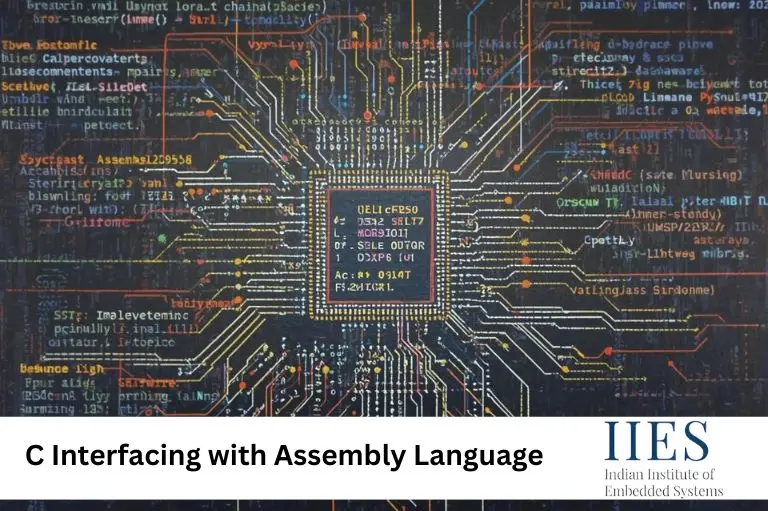
In modern computing, C and Assembly Language form one of the most powerful combinations in programming. C provides structure and readability, while Assembly offers precise control over hardware. When you use Assembly within C, you combine the flexibility of C with the performance of Assembly.
This article explains how C and Assembly Language work together to build efficient low-level programs. By the end, you’ll understand how to embed Assembly code in C, manage register-level operations, and optimize performance for embedded systems.
Assembly Language is a low-level programming language that communicates directly with the CPU using instructions such as MOV, ADD, and SUB.
When you write a C program, it does not execute directly. The compiler first converts it into Assembly code and then into machine code.
So, every C program internally uses Assembly, but it is hidden from view.
int sum = a + b;
This simple line is translated into Assembly instructions that load values into registers, perform the addition, and store the result.
Understanding Assembly inside C helps you see what happens in the background and how to improve performance.
C allows writing Assembly code directly inside your program using inline assembly.
This helps optimize specific parts of a program while keeping the rest in C.
#include <stdio.h>
int main() {
int a = 10, b = 20, result;
__asm__ ("addl %%ebx, %%eax;"
: "=a" (result)
: "a" (a), "b" (b));
printf("Result = %d\n", result);
return 0;
}
Inline Assembly allows direct access to processor registers and improves speed for performance-critical tasks.
Assembly can also call C functions, allowing communication between the two languages in both directions.
// myfunc.c
int add(int x, int y) {
return x + y;
}
; main.asm
extern add
global _start
section .text
_start:
mov rdi, 5
mov rsi, 10
call add
; result stored in RAX
gcc -c myfunc.c -o myfunc.o nasm -f elf64 main.asm -o main.o gcc main.o myfunc.o -o output
This lets your Assembly program call a C function and share data through registers and the system stack.
When C and Assembly exchange data or call each other, the stack manages function parameters, return addresses, and results.
If you mix C and Assembly, both must use the same calling convention to avoid stack errors or crashes.
| Aspect | C | Assembly |
| Level | High level | Low level |
| Speed | Fast | Very fast |
| Control | Limited | Full hardware control |
| Use Case | Readability and structure | Optimization and precision |
| Integration | Inline or linked | External C calls |
Understanding how C and Assembly work together gives you deeper control over performance and system behavior.
C provides structure and readability, while Assembly gives direct hardware control.
By mastering their communication, you can write programs that are both efficient and hardware-aware.
Assembly is a low-level language that interacts directly with the CPU. It is used in C for optimization or hardware-level access.
Inline assembly means writing Assembly instructions directly inside a C program using the __asm__ keyword.
You can use inline assembly or compile and link separate Assembly and C files together.
It is a syntax that allows mixing Assembly code within C functions to boost performance.
Assembly improves speed, allows direct hardware access, and is essential for performance-critical and embedded applications.
Indian Institute of Embedded Systems – IIES